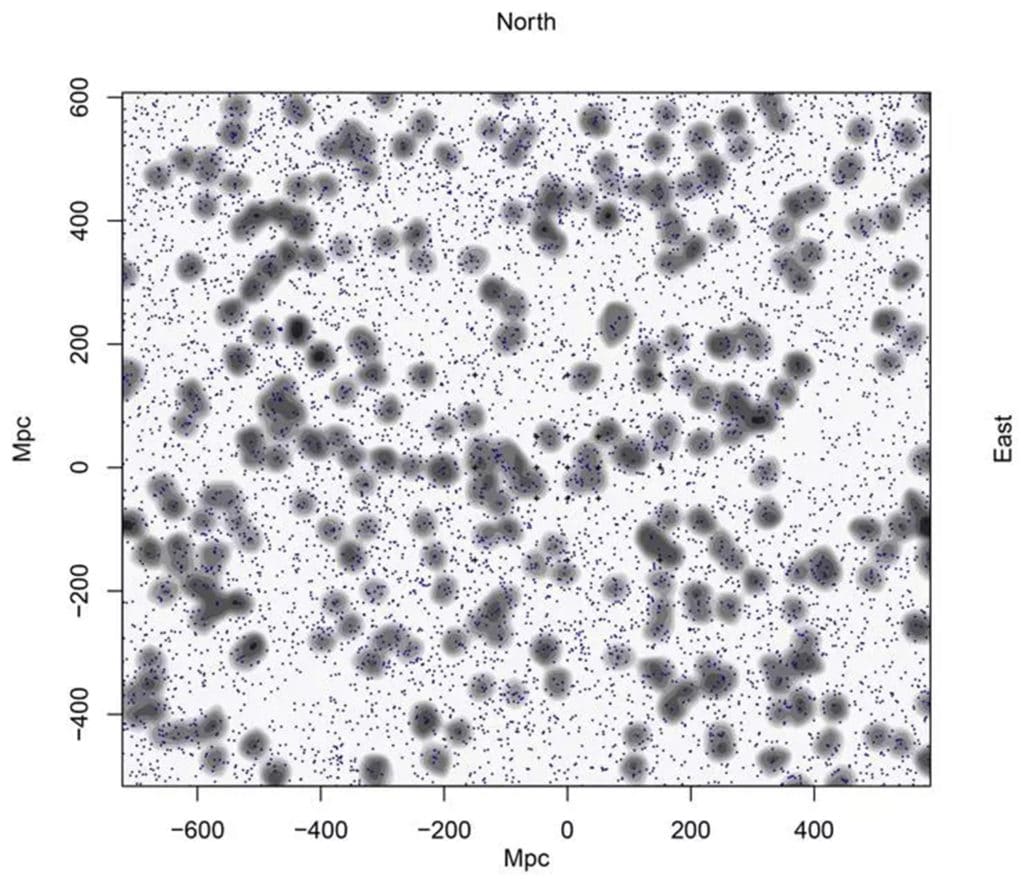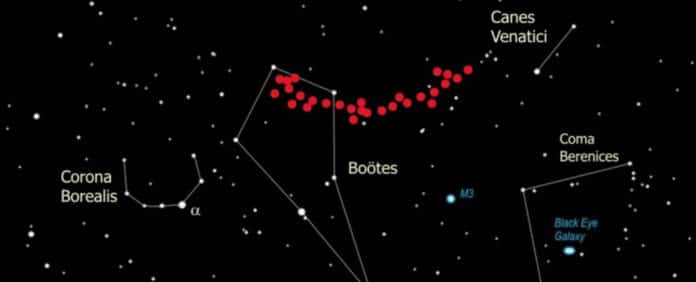Ph.D. student Alexia Lopez and adviser Roger Clowes, from the Jeremiah Horrocks Institute at the University of Central Lancashire (UCLan), together with collaborator Gerard Williger from the University of Louisville, USA, have discovered a giant, almost symmetrical arc of galaxies in distant space. Known as the Giant Arc, spanning 3.3 billion light-years is located more than 9.2 billion light-years away in the constellation of Boötes the Herdsman.
The discovery of this giant arc was made while looking at absorption lines in the spectra towards quasars from the Sloan Digital Sky Survey (SDSS). The team observed the intervening Magnesium (Mg) II absorption systems backlit by quasars. The discovery changes the idea of what an “average” bit of space looks like.
The Giant Arc, which is around 1/fifteenth the range of the perceptible Universe, shows as a gigantic, almost symmetrical, crescent of galaxies in the remote Universe. It is double the size of the striking Sloan Great Wall of galaxies and clusters that is found in the nearby Universe. This new revelation of the Giant Arc adds to an accumulating set of cautions difficulties to the Cosmological Principle.

The disclosure of the Giant Arc adds to the number of structures on scales bigger than those suspected to be “smooth” and, in this way, pushes the boundary size for the Cosmological Principle.
UCLan Ph.D. student Alexia Lopez said, “The Giant Arc we see certainly raises more questions than answers as it may expand the notion of ‘sufficiently large.’ The key question is, what do we consider to be ‘sufficiently large’?”
“A quasar acts like a giant lamp shining a spotlight through other galaxies, with the light eventually reaching us here on Earth.”
“We can use telescopes to measure the spectra of these quasars, which essentially tells us the journey that the quasar light has been through, and in particular where the light has been absorbed. We can locate where the quasar light has passed through galaxies by a signature Mg II doublet feature, a distinctive pair of absorption lines in the spectra. From this easily identified absorption ‘fingerprint,’ we can map low luminosity matter that would usually go unseen due to its faint light emitted in comparison to the quasars.”
“When viewed on such a large scale, we expect to see a statistically smooth distribution of matter across the Universe, based on the Cosmological Principle introduced by Einstein to make the maths easier, that the Universe is isotropic and homogeneous. It means that the night sky, when viewed on a sufficiently large scale, should look the same, regardless of the observers’ locations or the directions in which they are looking.”
“The Giant Arc we see certainly raises more questions than answers as it may expand the notion of ‘sufficiently large.’ The key question is, what do we consider to be ‘sufficiently large’?”
“We are seeing the Giant Arc now, but in reality, the data we’re looking at show the Universe as it was half its lifetime ago because the light has been en route, traveling towards us for billions of years. It was so long ago that the Universe at the time was about 1.8 times smaller than it is now.”
The work was presented at the 238th virtual meeting of the American Astronomical Society, 7-9 June.
